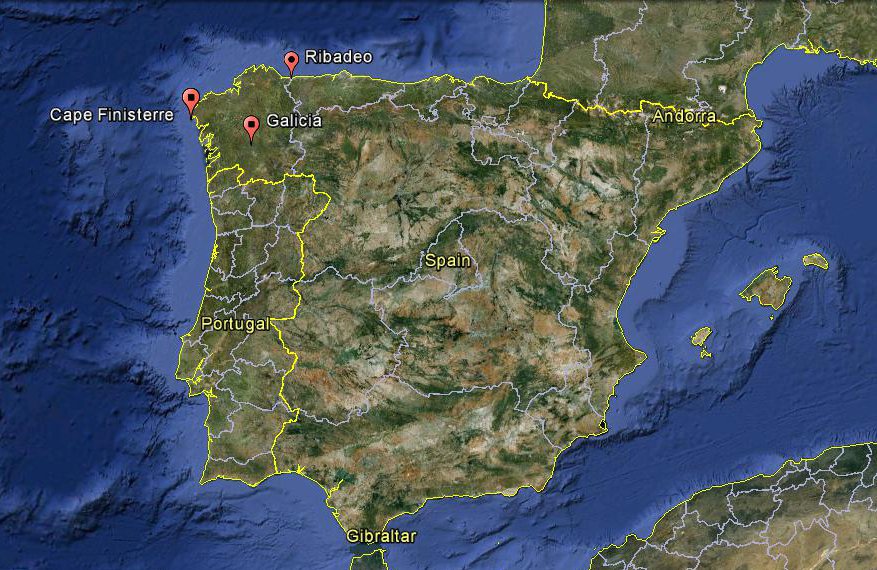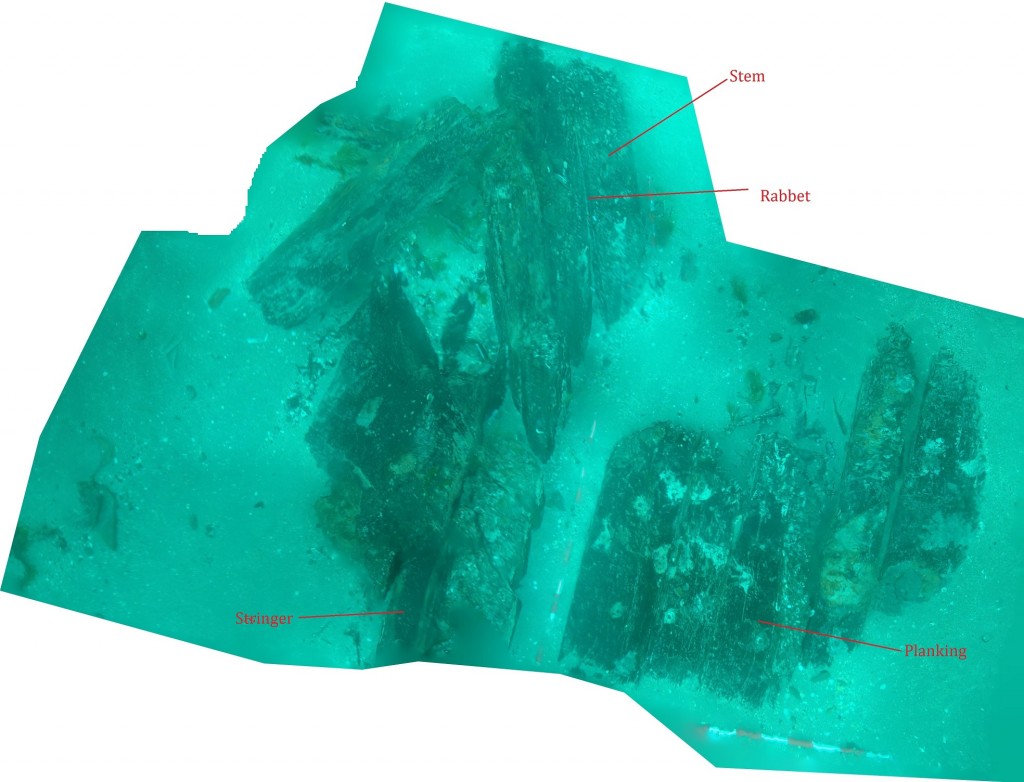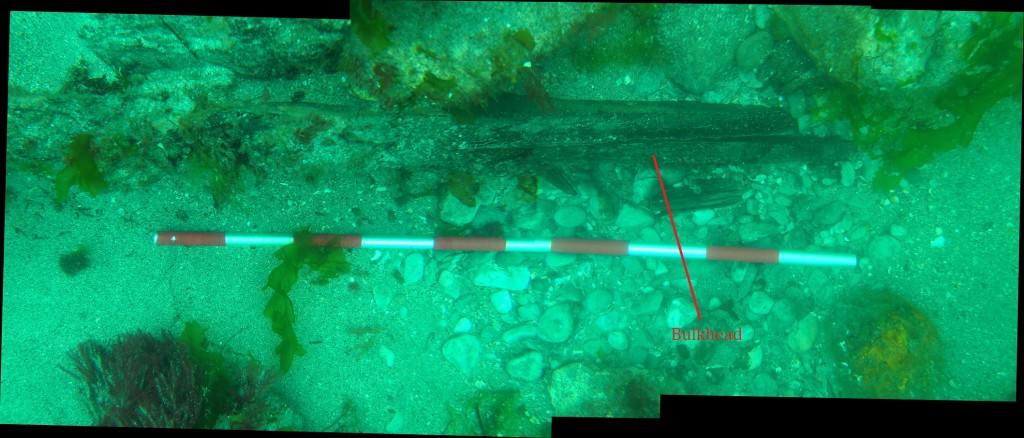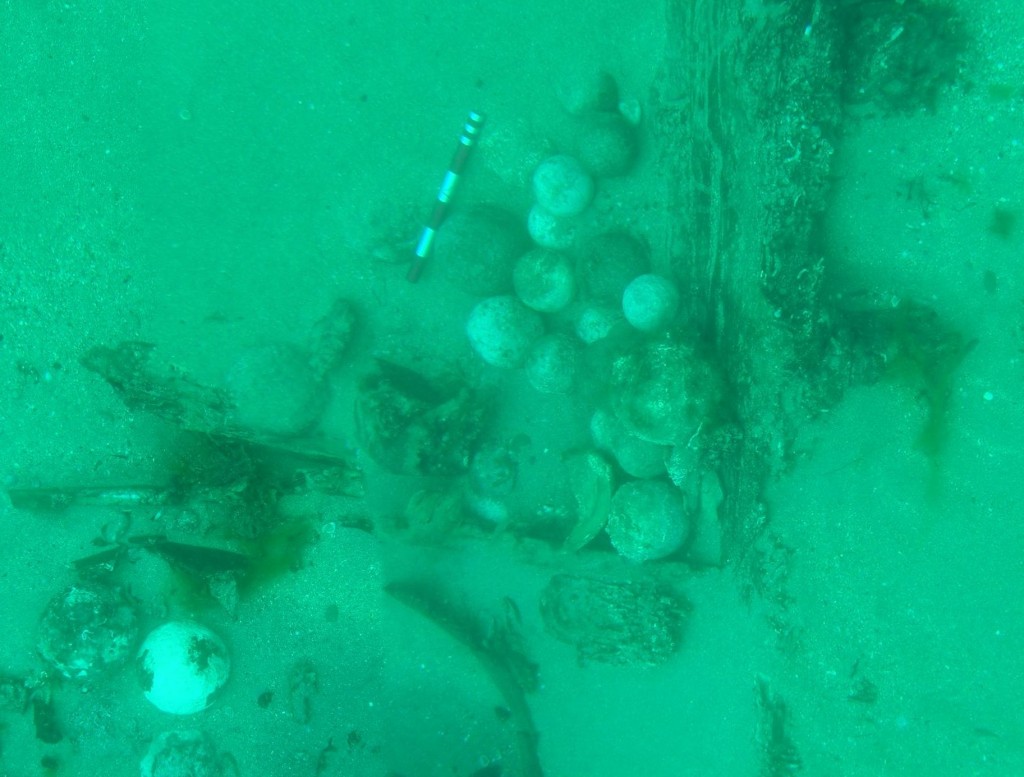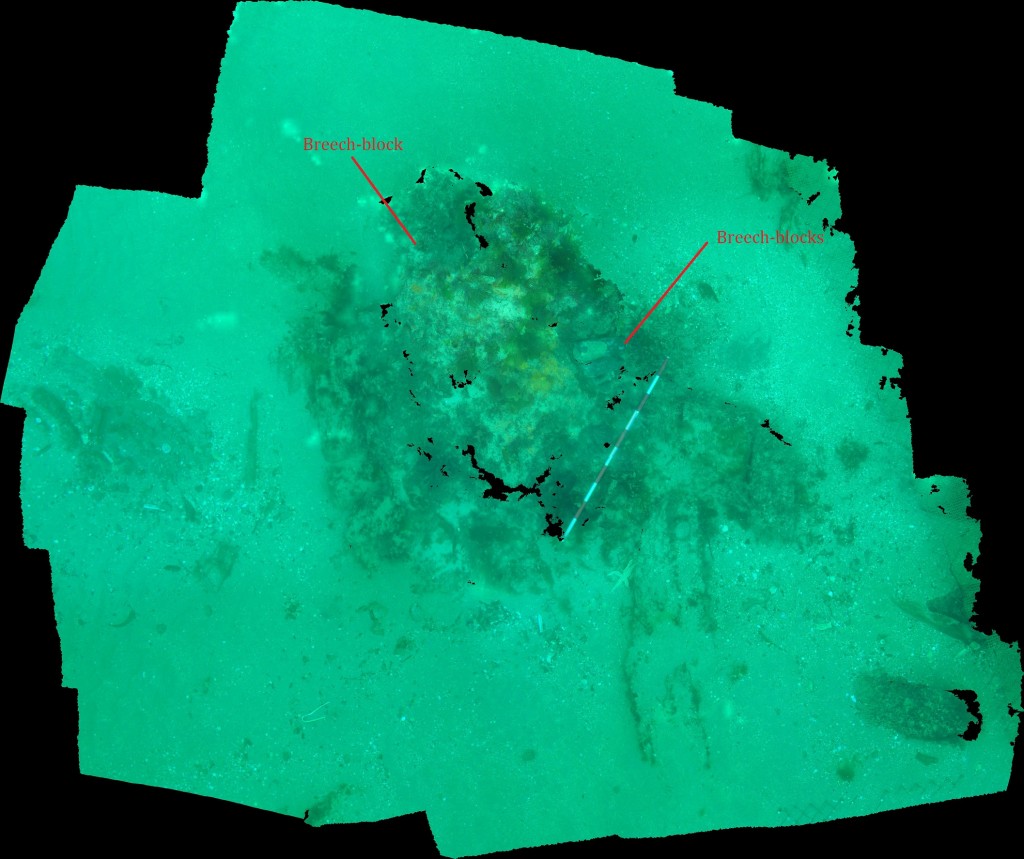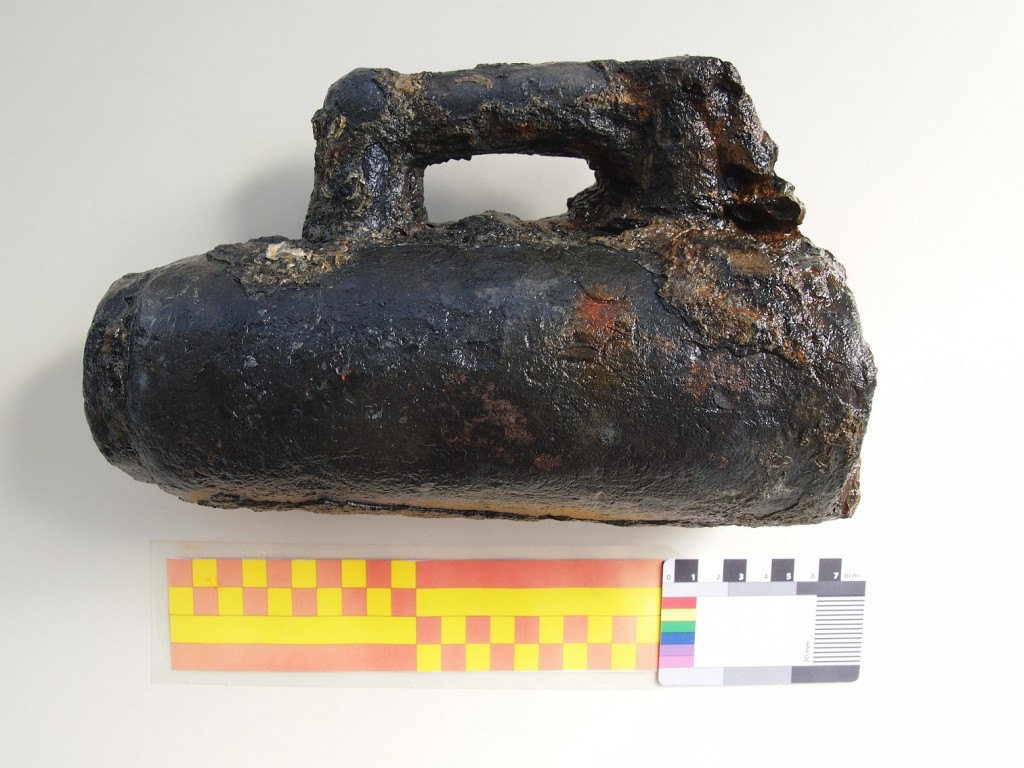During the past field season, the Finisterre team also conducted the preliminary assessment of an unknown 16th century shipwreck found in the Ribadeo Inlet, which is also in the Galicia region (fig.1).
This shipwreck was discovered earlier last year during a routine dredging of Ribadeo’s inlet canal. As the dredging was being monitored by an underwater archaeologist, Miguel San Claudio, the shipwreck could be detected before being damaged by the dredge (fig. 2). The remains discovered indicated that it was probably a 16th century ship. Since the main objective of the Finisterre Project team is the study the remains of 16th century shipwrecks. As such, we decided to include the new Ribadeo’s shipwreck in our project.
During two weeks the archaeological team members surveyed and mapped the remains of what it seemed a 16th century shipwreck sank in the inlet of Ribadeo, besides the canal to access the port of the town.
Two or three dives were conducted on daily bases in the shipwreck in order to survey and map the remains. It seemed that the ship was preserved from bow to stern although is covered by a thick layer of sand carried out by the tidal currents. That meant that the ship was only partially visible although different parts of the hull can be identified.
During the survey, it was possible to identify a fragment of the stem (fig. 3), hull planking (fig. 3), futtocks (fig. 3), stringers (fig. 3-4), and bulkheads (fig. 5).
In addition, cannon stone shots of 5 different calibers were also recorded in different locations of the shipwreck (fig. 6). Five different cannon shots, one of each caliber, were recovered for further studio (fig. 7).
In the same way, three bronze breech-blocks were also located, mapped, and raised since they were at risk of being looted (fig. 8).
The breech-blocks are currently being conserved in order to study them (fig. 9).
Do not miss the second part of the Ribadeo ship. Soon here, at the INA Blogs!
The Finisterre Team

